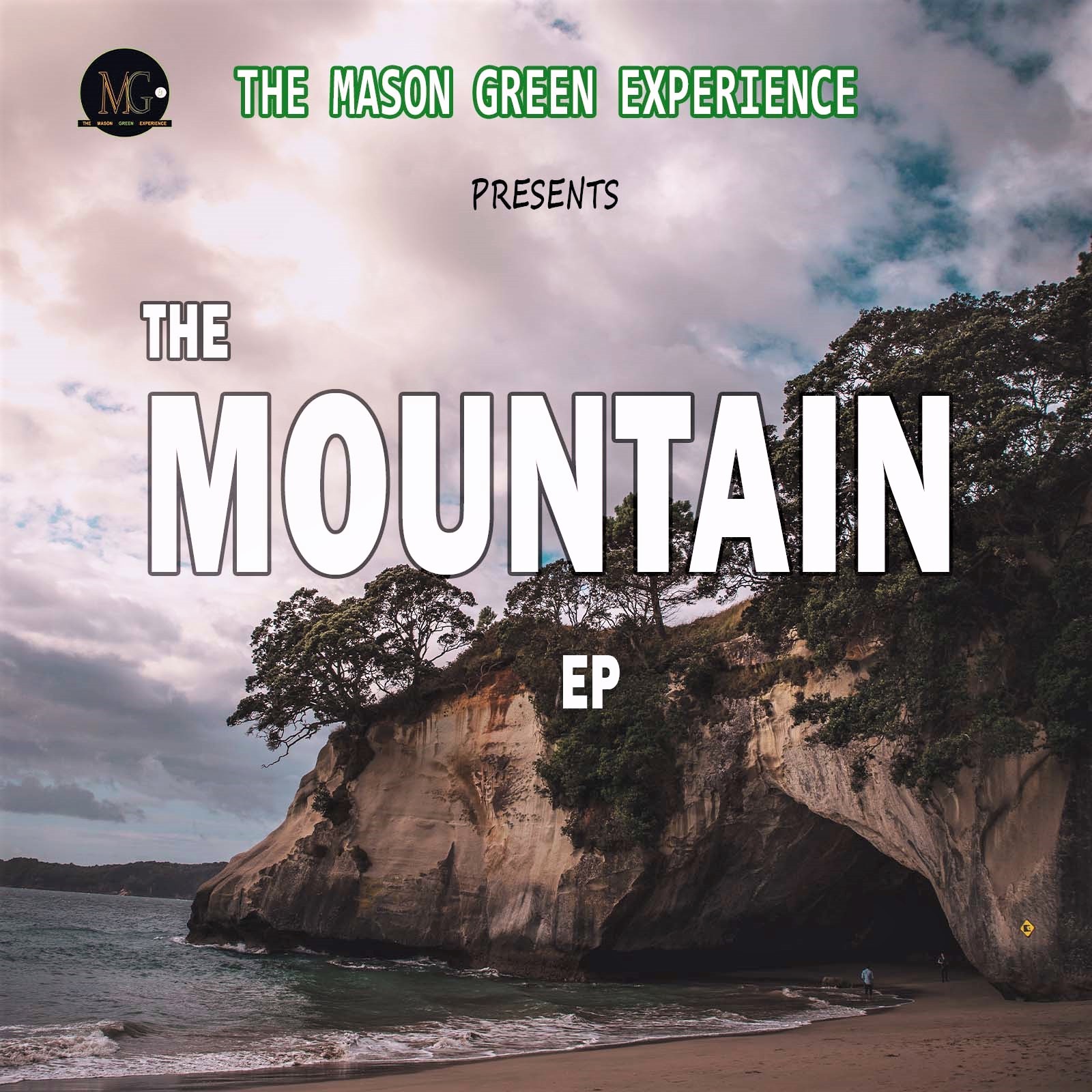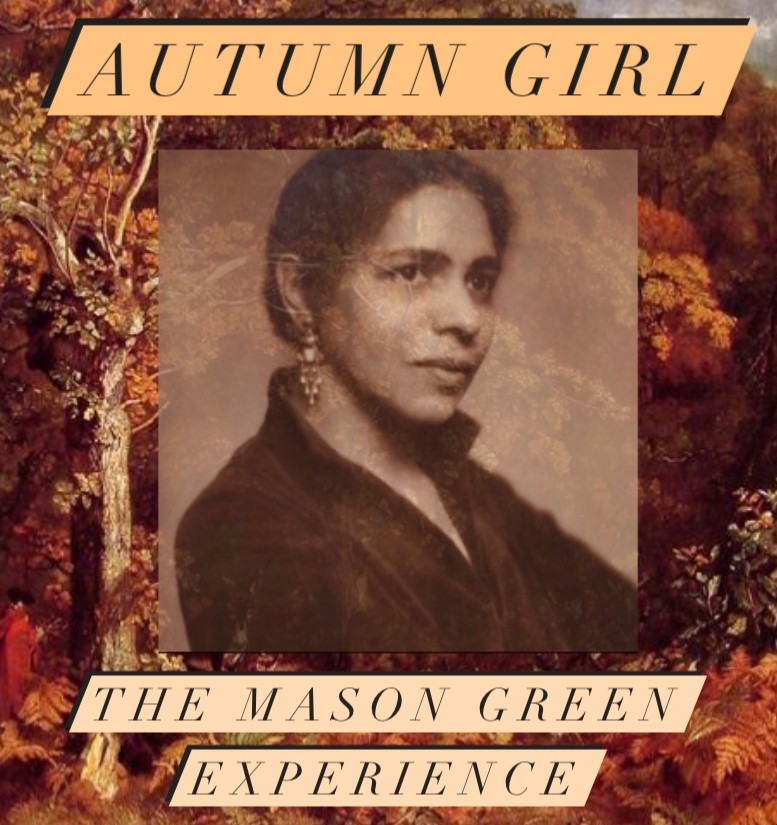We’re excited to introduce you to the always interesting and insightful Mason Green. We hope you’ll enjoy our conversation with Mason below.
Hi Mason, thanks for joining us today. Can you talk to us about a project that’s meant a lot to you?
I finished “The Mountain EP” recently, which was quite an accomplishment since I was struggling with a lot of anxiety and having a difficult time staying focused on any project.
I was seeing a music therapist at the time named Cathleen Gempeler, hoping to find ways to get my mental health back to where I wanted it.
One time, while Cathleen was helping me with a meditation exercise, the idea for a new concept album came to me almost all at once. I told her about the idea and she thought it was great. The idea was very philosophical and dealt with the concept of anxiety, so it was the perfect thing for me to work on at the time. Working on this project was itself a form of music therapy for me.
I began writing songs for the project, and Cathleen helped me stay focused and organized.
Originally it was going to be a very short project with only 5 songs. Then I decided there was more to the story I wanted to tell, so it became 7 tracks and then finally 9. Musically, this project has a lot in common with 1970s progressive rock acts such as Pink Floyd and Genesis.
“The Mountain EP” tells the story of Matthew Richards, a man who lives in a world that’s seemingly ordinary, until bizarre and unexplainable disasters start happening (“Business As Usual”). Matthew wonders what is going on and then hears “Voices In The Wind” offering him clues. He follows the voices to “The Mountain” and into a cave, where he experiences strange sounds and images, as though he were experiencing reality from someone else’s perspective.
Slowly, he begins to realize “The Secret” about his world: it doesn’t exist independently and neither does he. The world Matthew Richards lives in is actually inside the mind of a man named Richard Matthews, who himself is struggling with anxiety and attending music therapy sessions. Whenever Richard Matthews is going through a hard time mentally, this manifests as an unexplained disaster in Matthew Richards’ world.
Matthew is shocked by what he has learned and goes through an existential crisis (“Who Am I?”). But then, he realizes that he does indeed have a purpose and he is still capable of doing good. If he can convince the other inhabitants of his town to help clean up their world, it will help Richard Matthews with his own mental struggles. He rallies the people to help (“Roll Up Your Sleeves”), but the initial atmosphere of hope gives way to infighting and despair, with Matthew wondering whether any positive change is possible at all (“What Is The Point?”)
Finally he decides that things can get better, but only if the other townspeople go on the same journey he did (“Power Of Many”).
The last track (“The End Is The Beginning”) is mostly instrumental with a spoken epilogue. This track and “The Secret” include a lot of improvised drumming by Cathleen and myself, which is how we used to close out all of our music therapy sessions.
The storyline of “The Mountain EP” has a lot of different influences, I think. I’m pretty sure the Pixar film “Inside Out” subconsciously influenced my idea, but I didn’t realize that at first. Matthew Richards is a bit like one of the “Inside Out” emotion characters, except that at first he doesn’t know that, and he mistakenly thinks he’s actually a regular person.
There are also similarities to the reality-warping sci-fi of Philip K. Dick as well, as well as Plato’s allegory of the cave.
Finally, there’s some social commentary. Track 7 is partly a response to the social and political climate following the George Floyd protests, which (like the pandemic) affected me a lot emotionally. I had read an article about a small town where, in the wake of the protests, there had been an attempt to get the city to acknowledge the importance of combating racism.
However, this resulted in a backlash from those who thought this proposal concealed some sort of nefarious intent, and this resulted in even more racial tensions in the city. One person quoted in the article, who had helped come up with the proposal to begin with, said that things were now even worse than before.
The idea that an effort to make the world a better place could instead have the exact opposite effect weighed heavily on me, and “What Is The Point?” has this sort of despondent attitude. “Power Of Many” is then the flip side to that sentiment, suggesting that one person with a dream of making the world better might not be able to accomplish much, but if many people had the same dream, they would still have a chance.
Mason, love having you share your insights with us. Before we ask you more questions, maybe you can take a moment to introduce yourself to our readers who might have missed our earlier conversations?
I started writing songs back when I was in high school, as a way of expressing my emotions, or commenting (sometimes seriously, sometimes satirically) on the state of the world.
The very first song I started writing was “Autumn Girl”, but it took me a decade and a half to finish. It was about my first friend in high school. She was very nice to me at a time when I was socially isolated (due to being on the autism spectrum). She is also a bit of a poet, and one time she said the autumn leaves were especially beautiful because no two of them were alike—just like people. That provided the genesis for the song.
Unfortunately, she was being bullied by other students because she was Black, and new to the school district. My school district was overwhelmingly white at the time (and still is). I had naively assumed racism was a thing of the past since we talked about it a lot in history class. So when my friend told me about what was happening to her, I was like Robin Williams’ character in the film Jumanji: “What year is it?!?”
I thought at the time that maybe if I wrote a song about my friendship with her, it might convince other people not to be racist. That was way too optimistic, unfortunately. Due to the intensely personal nature of the song, I had a hard time getting it how I wanted it, and didn’t finish it until 2020.
I ended up giving it a retro rock ‘n roll sound, like something Buddy Holly could have done. Since I can’t sing like he could, I got a guest vocalist who had actually played him in The Buddy Holly Story musical.
Some of these changes were suggested by the studio manager I was working with at the time (who also wanted me to cut the song down in length). Overall I like how this version turned out, but I think I might still go back later and re-record it with my own vocals in a different style.
After “Autumn Girl”, I wanted to record more music, but instead I started having more writer’s block and associated anxiety, partly because of the pandemic and partly for other reasons. “The Mountain EP” was the result of my attempting to get out of this slump. Stylistically it is very, very different from “Autumn Girl”, but I used my “band” name, The Mason Green Experience, for both. The Mason Green Experience is really just me plus whomever I’m working with at the time.
https://youtube.com/playlist?list=OLAK5uy_kGrsGNnaRXivR-s54jnBmVA-D-mVUuxo0
How about pivoting – can you share the story of a time you’ve had to pivot?
I have an A.A.S. degree in Nanoscience Technology. Initially, I wanted to go into the science field and perhaps even invent something wonderful.
Unfortunately, most of the entry-level nanoscience jobs require a lot of fine motor precision, which I don’t have. A lot of people on the spectrum struggle with motor clumsiness when performing certain tasks, and I’m one of them. So getting a job working in a lab didn’t pan out. I ended up working at a cashier at Walgreens instead (which is still my day job currently) but of course I still pursue music, art, and other hobbies in my spare time.

We’d love to hear the story of how you built up your social media audience?
One thing I learned is that if you’re just trying to get as many followers/views as possible, you might want to consider taking things international.
Ad campaigns on Facebook, Instagram, etc., cost much less in some parts of the world than others. I discovered this almost by accident, and as a result, my Facebook page has thousands of followers from Nigeria, Kenya, Papua New Guinea, etc. When I was just starting out, I didn’t have much money to spare so I had to make every dollar count. If I had restricted my ad campaigns to only play in the U.S., I would have gotten far fewer followers.
I’ve liked connecting with people around the world, and in at least one case it led to a cross-continental collaboration. I know a woman in Nigeria who does graphic design and lyric videos, and she’s the one who created the album cover for The Mountain EP, as well as lyric videos for several tracks on the album (upcoming) as well as for Autumn Girl (already released).
One time, I received a microgrant from The ARC Minnesota, due to being a person on the autism spectrum who wanted help connecting socially with others. I used that to help acquire more followers on social media as well. 
Contact Info:
- Website: https://linktr.ee/masongreen
- Instagram: https://www.instagram.com/masonlgreen/
- Facebook: https://www.facebook.com/masongrandomfacts
- Youtube: https://www.youtube.com/channel/UC9MlZ9yEUSRxet0FgmdvSgQ
Image Credits
“Mason Green Experience” logo and “The Mountain EP” cover designed by Ruth Adedeji


